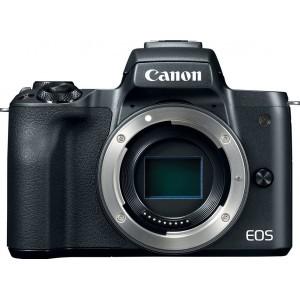


| Announced: | 26 Feb 2018 |
|---|---|
| Sensor Resolution: | 24Mp |
| Sensor Type: | APS-C CMOS |
| ISO: | 100-25600 |
| Weight: | 390g |
| Physical Dimensions: | 116 x 88 x 59 mm |
| Viewfinder: | Electronic |
| Screen Type: | 3" Fully articulated |
| Video Resolutions: | 3840 x 2160 |

49

46

55

64

67
This post contains affiliate links and I will be compensated if you make a purchase after clicking through my links. As an Amazon Associate I earn from qualifying purchases.
 pros
pros cons
consThe Canon Eos M50 is an entry-level mirrorless camera that features an electronic viewfinder, fully articulating touch screen, single control dial, and a 24-megapixel APS-C sensor-the same used by its M-series siblings. It marks a couple of firsts for Canon. It is the first Canon camera with the new DIGIC 8 image processor. It is also the first Canon M camera to include 4K video recording. Further, the Dual Pixel CMOS AF has improvements and designs, which is significant considering how good it already was. While these are notable additions, the Canon Eos M50 shares a lot with its more expensive sibling too, including the same 24-megapixel APS-C image sensor. The Canon Eos M50 was released in November of 2016 and continues the trend of M-series improvement, and addresses some of the M5's small list of issues. Cannon positions it as one that is more full-featured than prior entry-level M cameras. Its affordability appeals to beginners and those stepping up from a Smartphone as their primary photography device. Advantageously, it has a beefier, viewfinder-sporting M100 that is the brand’s most affordable M-mount offering.
It looks and feels very much like a miniature DSLR, right down to the viewfinder housing on the top where a DSLR pentaprism would be. M50 has a grip on the front for a secure one-handed hold. On the rear camera, it has a display of 3 inches that is slightly smaller than that of M5, which is 3.2 inches. It has a vari-angle display, whereas the M5 has just a tilting display though in both cases they offer touch functionality. The Canon Eos M50's three-inch display has approximately 1.04 million dots while the M5's has 1.62 million. Furthermore, it does not have a control dial around the four-way pad with its power relocated. Its dedicated movie record button is moved from the back of the camera to the top deck. The M50 simplifies things greatly by removing the exposure compensation and function dials, and the flash release button that now has a manual pop-up flash. Besides, there is the main dial, a multi-function button, and non-locking mode dial, but to the left of the electronic viewfinder, there are no dials or buttons whatsoever.
The M50 measures 4.6 x 3.5 x 2.3 inches (116.3 mm x 88.1 x 58.7 mm) and weighs 13.7 ounces (387 g) with the inclusion of the battery and an SD memory card. However, the white version weighs 3 grams more. By comparison, the M5 is a little narrower despite having more dials, but a little taller and deeper. It is around 1.3 ounces or 37 grams heavier than M50 as well. The Eos M50’s touchscreen interface works very well indeed. It responds instantly to the lightest touch and the icons are large enough that one does not need to pinpoint accuracy when tapping. Vari-angle screen mechanisms sometimes feel a little flimsy, but not this one. The Eos M50’s rear screen has a firm pivoting action with little play, and it can be folded back in reverse so that the camera body protects it. This rear panel has a lining with a smart leather-like covering.
The Canon Eos M50’s Dual Pixel CMOS AF system is so fast in most situations that it feels almost instant and the kit lens probably deserves some credit for this. Canon’s stepping motor lenses offer fast, silent autofocus that is perfect for both stills and video. It employs the 24 megapixels APS-C CMOS sensor that has a native sensitivity range as the M5 of 100 to 25,600 expandable to ISO 51,200. Further, the M50 supports the next-generation CR3 raw format and offers a new C-RAW lossy compression raw option whose image files are about 40 percent smaller when compared to losslessly compression raw files. This feature leads to performance gains. As the first camera with a DIGIC 8 processor, there are speed improvements.
The camera can shoot at up to 10 frames per second with single-shot autofocus and 7.4 frames per second with continuous autofocus. This is about a frame per second faster than the M5 for single-shot AF and 0.4 fps faster for continuous AF. The M50 can shoot 10 raw or 33 JPEG images at 10 fps before it slows. However, by shooting in the new lossy compressed C-RAW format you can increase raw buffer depth to 16 frames at 10 fps. It has EF-M 18-150mm f/3.5-6.3 IS STM, EF-M 28mm f/3.5 Macro IS STM and EF-M 55-200mm f/4.5-6.3 IS STM lenses that all use 143 points, which covers 88% of the horizontal image area and 100% of the vertical image area. The M50 offers Eye Detection and touch-and-drag autofocus features with the latter operating via its rear touchscreen display. The rating of the working range of the autofocus system is -2 to 18 EV with the assistance of a built-in AF LED lamp.
The camera has numerous shooting modes. In addition to the standard program, aperture priority (Av), shutter speed priority (Tv), and manual shooting modes, there are also scene modes, and the camera also includes a new silent mode as part of its scene mode selection. It allows the transfer of images through its built-in Wi-Fi with NFC and Bluetooth. It has a shutter speed range of 30 to 1/4,000 second in program, aperture- or shutter-priority and manual modes, and a built-in manually-deployed flash that has a flash sync of 1/200s and a guide number of only 16.4 feet (5m) at ISO 100. The camera relies upon a 384-zone metering system and offers evaluative, partial, spot, and center-weighted average metering modes. Being the first M-series with a 4K video, it records 4K ultra-high definition video at 23.98 frames per second. Further, it can shoot Full HD video at up to 60 fps, and an HD video at up to 120 fps. The camera has a Micro-B USB 2.0 port, a Micro HDMI Type-D port, which supports HDMI output of the shooting screen without sound while recording, and a 3.5mm stereo microphone jack. It uses Canon's 7.2V 875mAh LP-E12 lithium-ion battery pack, which is CIPA-rated to 235 shots in regular shooting with either display and 370 shots in Eco Mode.
The Canon EOS M50 is available in multiple configurations, and a choice of black or white body colors. The body itself has a suggested list price of around US$680. The most affordable kit comes with an EF-M 15-45mm lens, and that lists for around US$800. For US$1,150 list, one can purchase the M50 with the 15-45mm lens and an EF-M 55-200mm zoom, a combination that is available only in black. Finally, there is a Video Creator Kit for about US$900, which includes a Rode on-camera mic and a 32GB SD card in addition to the 15-45mm lens. All of these list prices, incidentally, are US$100 less compared to the prices at launch.
More than an entry-level camera but not quite an enthusiast-grade one, the new Canon EOS M50 mirrorless camera includes a lot of very interesting features and in some ways tops every other Canon M-series camera despite not having the highest price. The M50 is the first M-series camera with 4K video, for example, but that is far from the only new feature it includes. It is very easy to use with a very vari-angle touchscreen display. It is a capable and affordable camera for beginners and young families. It does a fine job capturing candids and other casual shots. Although the Guide Mode leaves something worth desiring for seasoned shooters, it does offer a non-intimidating way to learn about some of the more technical aspects of photography.
| Review | compare Canon EOS M50 with | overall score |  Portrait Portrait |
 Landscape Landscape |
 Sport Sport |
 Street Street |
 Everyday Everyday |
|
 |
CanonEOS M50 | 58 | 49 | 46 | 55 | 64 | 67 | $528.00 |
|---|---|---|---|---|---|---|---|---|
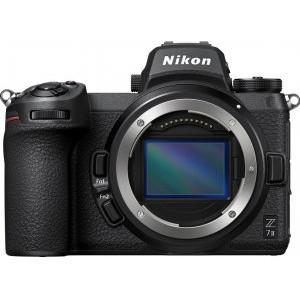 |
NikonZ7 Mark II | 70 | 69 | 68 | 68 | 70 | 71 | buy on |
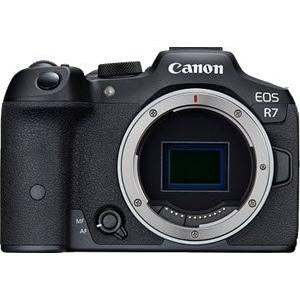 |
CanonEOS R7 | 65 | 53 | 51 | 68 | 72 | 74 | buy on |
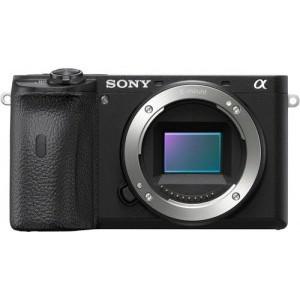 |
SonyAlpha a6600 | 65 | 51 | 50 | 67 | 72 | 74 | buy on |
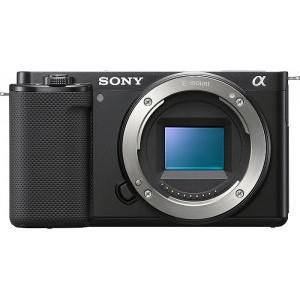 |
SonyZV-E10 | 64 | 50 | 48 | 63 | 72 | 72 | buy on |
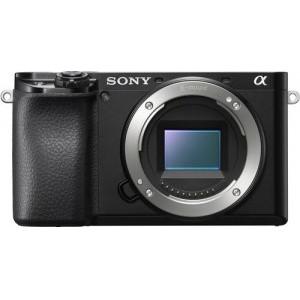 |
SonyAlpha a6100 | 63 | 51 | 48 | 62 | 69 | 72 | buy on |
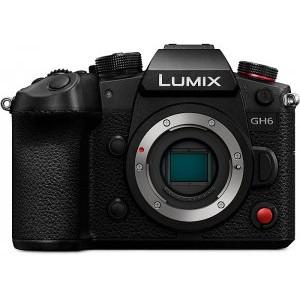 |
PanasonicLumix DC-GH6 | 62 | 47 | 46 | 70 | 64 | 67 | buy on |
The Canon EOS M50 is a mirrorless camera launched on 02/26/2018.
Technically speaking, the Canon EOS M50 ranks in the average of its category, scoring 58 overall. The Canon EOS M50 weights 390 gr and spans 116 x 88 x 59 mm. This means that it is particularly light and small, indeed one of the most handy options within its category.
Going into details, the Canon EOS M50 behaves better than average in its category for:
On the contrary, the performance of Canon EOS M50 is below the category average in:
However, the technical performance of your camera should be put in context. Indeed, depending on the type of photography you are interested in, each individual camera feature can impact your pictures to a different extent. This is the reason why we developed the iCamRank. iCamRank has been designed to weight all the individual technical specifications of each camera in the camerarace database, depending on different shooting conditions. Thus, here is what we suggest, depending on the photography type you like most:
Last but not least, the price. You can find the Canon EOS M50 sold on Amazon for a price comprised between 528.0 USD and 949.0 USD, which is in the average for this camera category.
Overall, Canon EOS M50 is a great value for money. If this is the kind of camera you are looking for, you should definitely consider buying it.
Sensor Type
CMOS
Sensor Size
APS-C
Sensor Dimensions
22.3 x 14.9 mm
Sensor Area
332.27 mm2
Sensor Resolution
24 Mp
Max Image Resolution
6000 x 4000
Max Native ISO
25600
Min Native ISO
100
RAW Support

Manual Focus

Lens Mount
Canon EF-M
Number of Lenses
15
Focal Length Multiplier
1.6
Screen Type
Fully articulated
Screen Size
3.0"
Screen Resolution
1040Kdot
Live View

Touch Screen

Viewfinder
Electronic
Viewfinder Resolution
2360000.0
Viewfinder Coverage
100
Viewfinder Magnification
None
Min Shutter Speed
30s
Max Shutter Speed
1/4000s
Continuous Shooting
10fps
Shutter Priority

Aperture Priority

Manual Exposure Mode

Exposure Compensation

Custom White Balance

Image Stabilization

Built-in Flash

Flash Range
5.0
Max Flash Sync
-
Flash Modes
n/a
External Flash

AE Bracketing

WB Bracketing

DxO Overall Score
DxO Color Depth
DxO Dynamic Range
DxO Low Light ISO
Multi-Segment

Average

Spot

Partial

AF-Area

Center Weighted

AF Touch

AF Continuous

AF Single

AF Tracking

AF Selective

AF Center

AF MultiArea

AF Live View

AF Face Detection

AF Contrast Detection

AF Phase Detection

Number of Focus Points
143
Number of Cross Focus Points
0
Video Resolutions
3840 x 2160 @ 23.98p / 120 Mbps MOV H.264 AAC
Max Video Resolution
3840x2160
Video Formats
MPEG-4 H.264
Microphone Port

Headphone Port

Wireless Connectivity
Built-in
HDMI

USB
No
Environmental Sealing

Water Proof

Dust Proof

Shock Proof

Crush Proof

Freeze Proof

Weight
390g
Physical Dimensions
116 x 88 x 59 mm
Battery Life
235
Battery Type
Built-in
Battery Model
Self Timer
Yes (2 or 10 secs, custom)
Timelapse Recording

GPS

Storage Type
SD SDHC SDXC slot (UHS-I compatible)
Storage Slots
1
Copyright 2024
EMA s.r.l.s. | p.i. 11740890014